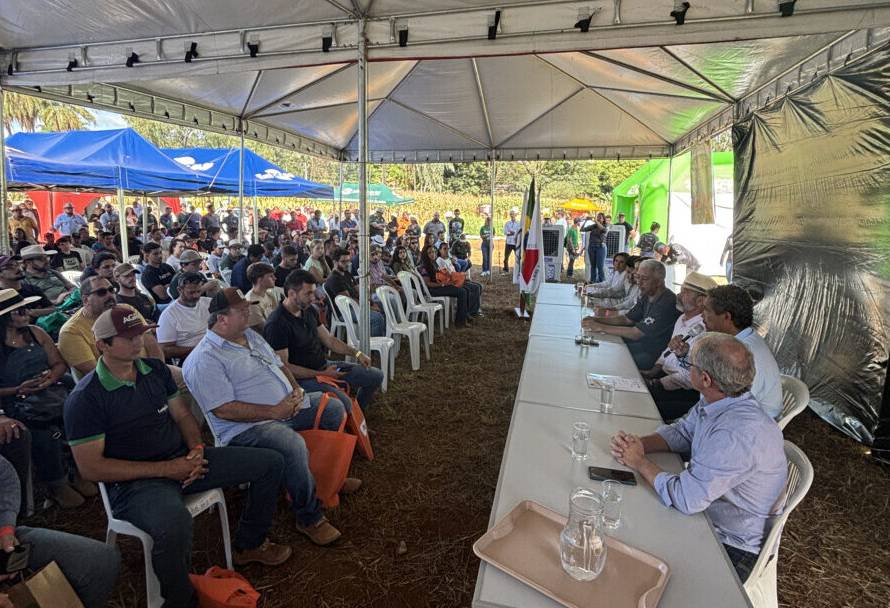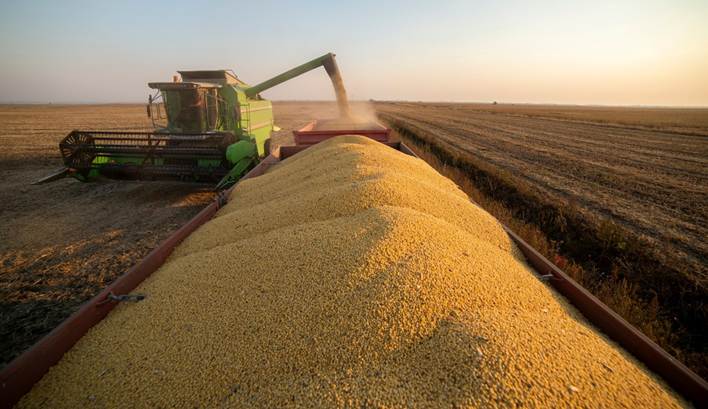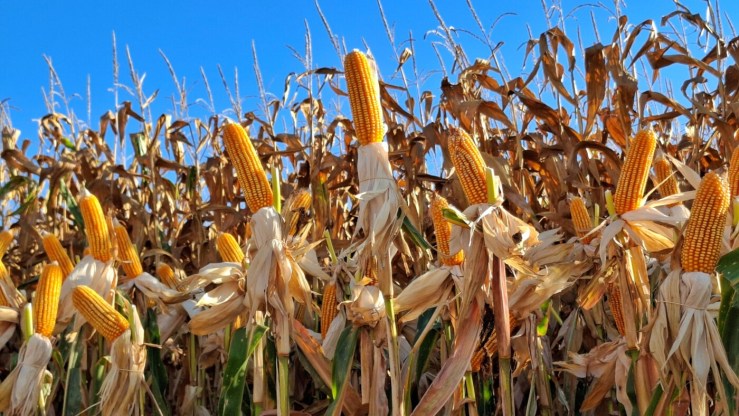On the morning of this Tuesday (02), Emater (RS) -Ascar presented the initial estimates for the 2025/2026 summer grain harvest, during the traditional coffee with the press, at the Extension Arena, in Expointer. According to the initial survey, Rio Grande do Sul will have a production of 35,328,754 tons, which means 27.30% more than the last harvest, which registered 27,752,455 tons of grains, including soybeans, rice, corn, silage corn, beans and sorghum.
Corn grain is a highlight, with an expected area increase of 9.31%, from 718,190 hectares cultivated in the previous harvest to 785,030 hectares for this harvest. The estimated productivity is 7,376 kilograms of corn per hectare, a decrease of 0.03% compared to the previous harvest's 7,378 kilograms. These projections generate an expected production of 5,789,995 tons, an increase of 9.45% above the 5,290,051 tons of corn produced in the previous harvest.
Soybeans also have a positive estimate

Photo: Gilson Abreu
As for soybeans, the main commodity cultivated in the State, the projected production is 21,440,133 tons, an increase of 57.14% compared to the last harvest, which was 13,643,936 tons of grain, in an area of 6,742,236 hectares, 0.80% less than the last harvest, when 6,796,916 hectares were cultivated.
The expected yield is 3,180 kilograms of soybeans per hectare this harvest, 58.29% above the 2024/2025 yield of 2,009 kilograms of soybeans per hectare. "It's important to note that, of all the soybean-producing regions, three—Bagé, Ijuí, and Santa Maria—have a projected area exceeding 1 million hectares for cultivation this harvest, despite the small reduction in expected area, a reflection of the previous drought," said Claudinei Baldissera, technical director of Emater/RS, when presenting projections for the summer grain harvest.
Corn varies in different regions
In the case of corn and corn silage, Baldissera observes the variation in productivity in the different producing regions, which clearly reflects the environments of each region, but which deserves a more detailed technical look.
The area to be cultivated with corn silage this harvest is 366,067 hectares, 2,74% more than in the last harvest, when 356,300 hectares were cultivated in RS. With an expected productivity of 38,338 kilograms of corn silage per hectare, 5,28% more than in the last harvest, which was 36,416 kilograms per hectare, corn silage production is expected to reach a 8,29% higher production, increasing from 12,960,145 tons in the last harvest to 14,034,434 tons of corn silage this harvest.

Photo: Gilson Abreu
The initial estimate for the first bean crop shows a reduction in area of 15,271 TP4T, from 30,797 hectares cultivated in the previous harvest to 26,096 hectares to be cultivated in this summer harvest in Rio Grande do Sul. The expected productivity is 1,779 kilograms of beans per hectare, 2,971 TP4T lower than the previous harvest, which was 1,833 kilograms of beans per hectare. This allows us to project a statewide bean production of 46,412 tons this harvest, a decrease of 17,271 TP4T compared to the previous harvest.
In rice, data from the Rio Grande do Sul Rice Institute (Irga) also show a reduction in area of 5.17%, from 970,216 hectares to 920,081 hectares this harvest, which projects a production 8.10% lower than the previous harvest, which was 8,762,370 tons, to 8,052,213 tons this harvest. The expected productivity this harvest is 8,752 kilograms of rice per hectare, 3.23% lower than the previous harvest, which was 9,044 kilograms of rice per hectare.
The novelty in this initial estimate is the inclusion of sorghum as a crop that occupies considerable areas, such as Bagé, where it is cultivated on more than 8 thousand hectares, totaling 11,888 hectares in the State.
Climate projections
Before the release of summer grain production estimates, Flávio Varone, meteorologist at the State Secretariat of Agriculture, Livestock, Sustainable Production, and Irrigation (Seapi), projected a normal spring, with average rainfall in September and October, with November expected to be drier, meaning below-average rainfall. Temperatures will be higher, above average, in the September-November quarter. For summer, the trend is for above-average temperatures and near-average rainfall. Varone emphasizes that the data is updated weekly and can be viewed by clicking here.
Qualification and appreciation
The ongoing development and development of Emater/RS-Ascar's professional staff was highlighted by President Luciano Schwerz when he announced, through the implementation of Operation Terra Forte, a soil restoration program in Rio Grande do Sul, the restructuring of the institution's vehicle fleet, which will support field work, and the hiring of 144 new extension agents. "Terra Forte is the result of an important partnership, based on respect and commitment to farmers, who are in our vision of action, and for whom we create opportunities," said Schwerz.





